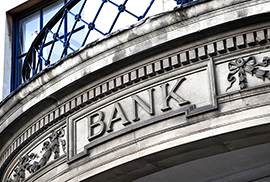Read the full paper.
The African Development Bank (AfDB) and the Inter-American Development Bank (IDB) have co-developed proposals to boost the lending capacity of Multilateral Development Banks (MDBs) using Special Drawing Rights (SDRs) to create MDB hybrid capital (see AfDB and IDB (2023)). The proposals (henceforth referred to as ‘the MDB Proposal’) have been presented, by the AfDB and IDB, to the International Monetary Fund (IMF) and to other policy audiences.
Under the MDB Proposal, sovereign holders of SDRs would lend them to MDBs that are current or prospective prescribed holders of SDRs, including the AfDB and the IDB. The bonds would be structured to be consistent with rating agency and accounting definitions of hybrid capital. The creation of the additional capital would allow the AfDB, the IDB and other MDBs to expand their lending without incurring pressure on their ratings. Thus, by lending their surplus SDRs, sovereigns could transform the capital position of MDBs.
The proposal bears obvious comparison with the schemes operated by the IMF itself whereby SDR holders may lend their SDRs to two trusts which make loans to poor countries, the Poverty Reduction and Growth Trust (PRGT) or the Resilience and Sustainability Trust (RST). Particularly, the PRGT has a long history of successful operation, lending on a short- and medium-term basis to poor countries in balance of payments need. The RST provides longer-term financing in the IMF’s words: “to contribute to prospective balance of payments stability to enhance economic resilience and sustainability.” As such, its lending, while still aimed at balance of payments relief is comparable to MDB lending.
The approach proposed by AfDB and IDB has been widely discussed in development policy circles. G20 Capital Adequacy Framework Review (2022) mentions the MDB Proposal in discussing innovative financing approaches that could boost MDBs’ capacity to lend. Independent Experts Group (2023) page 13 states: “Mobilizing hybrid capital, including through recycled SDRs, and risk transfers to private and public actors to free up capital would also add significant capacity.”
The AfDB and the IDB have commissioned Risk Control to analyse the proposal, focusing specifically on the credit standing and liquidity status of the hybrid capital instruments. Most countries that hold SDRs do so through their central banks, and some are only willing to consider uses of their SDR holdings that maintain their ‘Reserve Asset Status’ (RAS). In other words, they require that SDRs that are lent be immediately available to the central bank in question in the event of a balance of payments crisis. Key characteristics necessary for RAS are high credit quality and liquidity.
This report analyses the credit quality and liquidity of SDRs used to back MDB hybrid equity to assess whether the proposed hybrid capital instruments could be seen as having RAS. Our conclusion that SDR-based hybrid capital will retain RAS implies that countries will be able to account for these instruments as reserves.
The key points that emerge from our analysis are:
- The credit quality of SDR-based hybrid capital is extremely high. Using parameters (PDs and LGDs) adjusted for PCT within a CPM, the probability that the hybrid capital instruments become loss absorbing is negligibly low for both AfDB and IDB portfolios. Note that when parameters are used that are not adjusted for PCT (i.e., in line with parameters one could use for an Emerging Market (EM) sovereign portfolio of a private sector investor), loss rates are high. So, PCT is a key aspect.
- On pricing, we model payoffs and loss-absorption related losses on hybrid capital again using a CPM but, in this case, with risk adjusted distributions. The actuarially fair spreads that we infer are very narrow (being no more than a few basis points). This is important because it implies that, if MDBs are willing to pay a reasonable premium over and above this amount, a case could be made to central bank reserve managers that investing in hybrid capital constitutes a valuable investment opportunity.
- On liquidity, the basic mechanisms for liquidity proposed by the AfDB would be the same for hybrid capital as those employed for the PRGT and RST.
- On development leverage, the use of SDRs as contributions to hybrid equity is highly efficient, generating a high volume of development finance. By way of contrast, the PRGT or RST require the provision of ‘equity capital’ in the form of donations to the reserve account to achieve a development leverage of unity. One the other hand, one SDR devoted to hybrid capital, can generate higher MDB lending of 3 to 4 depending on the degree of conservatism with which the MDB manages its balance sheet. The leveraging capacity is based on the amount of risk capital and the volume of liquidity that MDBs like AfDB or IDB have to set aside to generate additional loans, assuming a risk profile similar to those of their current balance sheets.


